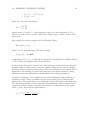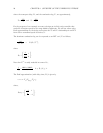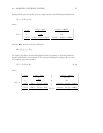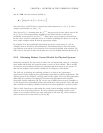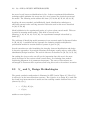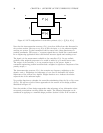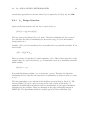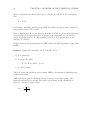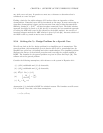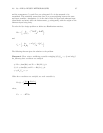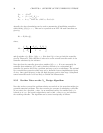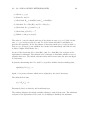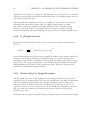2.3. H
∞
AND H
2
DESIGN METHODOLOGIES 33
that the effect of all disturbances, w, at every frequency, can be measured by the
controller. If either of these conditions are not met then the problem could be ill-posed.
It is possible to violate these conditions by using pure integrators as design weights.
While this could still give a meaningful design problem, solution via the state-space H
∞
approach requires that an approximation be used for the integrator weight. If item (iii)
or (iv) is violated at ω = 0, then the integrator should be replaced with very low
frequency pole.
2.3.3 A Brief Review of the Algebraic Riccati Equation
Solution of the H
∞
design problem requires the solution of coupled Algebraic Riccati
Equations (AREs). This is illustrated in more detail in the next section. Here we give a
very brief review of the Riccati equation and the most common solution techniques.
Some knowledge of this area is helpful because the design software displays variables
related to the Riccati solutions and the user has the option of adjusting several software
tolerances relating to these solutions. The notation used here comes from DGKF [58].
The matrix equation,
A
T
X + XA+XRX −Q =0,
is an ARE. Given A, R and Q (with R and Q symmetric), we are interested in finding a
symmetric positive definite solution, X. In other words, X = X
T
≥ 0. With this ARE
we associate a Hamiltonian matrix, denoted by H,
H =
AR
Q−A
T
.
If dim(A)=n×n, then dim(H)=2n×2n. Assume that H has no ω axis eigenvalues.
The structure of H meansthatithasnstable (Re{s} < 0) and n unstable (Re{s} > 0)
eigenvalues.
Now consider finding a basis for the stable eigenvalues. Stacking the basis vectors
together will give a 2n × n matrix,
X
1
X
2
.



